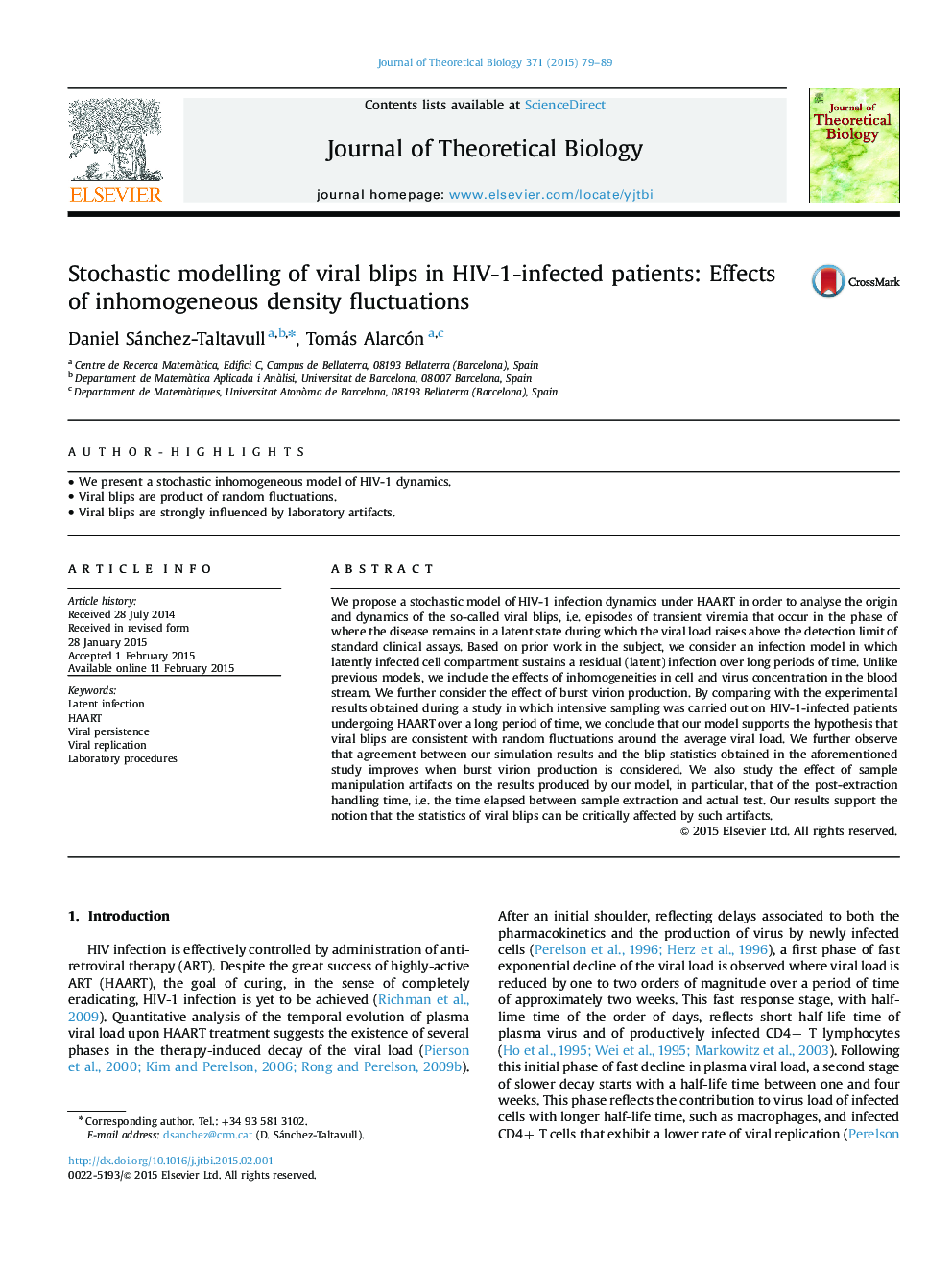| Article ID | Journal | Published Year | Pages | File Type |
|---|---|---|---|---|
| 6369784 | Journal of Theoretical Biology | 2015 | 11 Pages |
Author-Highlightsâ¢We present a stochastic inhomogeneous model of HIV-1 dynamics.â¢Viral blips are product of random fluctuations.â¢Viral blips are strongly influenced by laboratory artifacts.
We propose a stochastic model of HIV-1 infection dynamics under HAART in order to analyse the origin and dynamics of the so-called viral blips, i.e. episodes of transient viremia that occur in the phase of where the disease remains in a latent state during which the viral load raises above the detection limit of standard clinical assays. Based on prior work in the subject, we consider an infection model in which latently infected cell compartment sustains a residual (latent) infection over long periods of time. Unlike previous models, we include the effects of inhomogeneities in cell and virus concentration in the blood stream. We further consider the effect of burst virion production. By comparing with the experimental results obtained during a study in which intensive sampling was carried out on HIV-1-infected patients undergoing HAART over a long period of time, we conclude that our model supports the hypothesis that viral blips are consistent with random fluctuations around the average viral load. We further observe that agreement between our simulation results and the blip statistics obtained in the aforementioned study improves when burst virion production is considered. We also study the effect of sample manipulation artifacts on the results produced by our model, in particular, that of the post-extraction handling time, i.e. the time elapsed between sample extraction and actual test. Our results support the notion that the statistics of viral blips can be critically affected by such artifacts.
